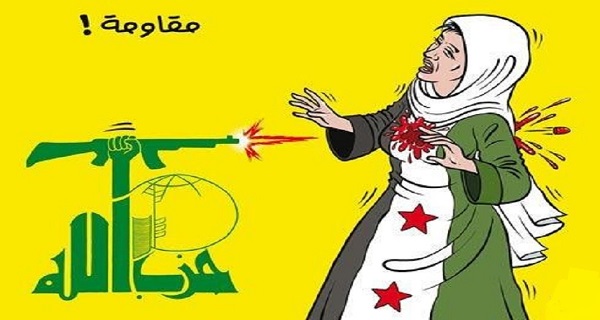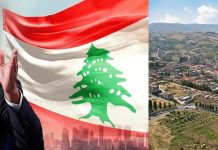Iran’s Influence in Syria Far Broader Than Commonly Understood
النفوذ الإيراني في سوريا هو أكثر وأعمق بكثير مما هو معلن ومعروف
Ilan Berman/The Tablet web site/June 01/18
More than just providing Assad with military support, the Islamic Republic supplies Syria with anything from blood drives to sporting events.
Just how deep does Iran’s influence run in Syria?
After a half decade of overt and covert Iranian military assistance to the regime of Bashar al-Assad, the Iranian regime is widely understood to be playing a key role in the Syrian theater. But, according to a new study from the Omran Center for Strategic Studies, an Istanbul-based think tank focused on the Syrian conflict, this backing is far broader than commonly understood, and encompasses not just military assistance but also an extensive web of economic and political contacts that are designed to give the Iranian regime a lasting presence on the territory of its top regional ally.
“Iranian influence in Syria is often reduced to its military support,” the study notes. However, “Iran’s Islamic Revolutionary Guard Corps (IRGC) and its auxiliary institutions not only provided military and financial support to the Syrian regime but have expanded their administrative and economic activities in Syria by infusing their institutions within the Armed Forces, service-delivery ministries, local political and armed bodies, and non-governmental organizations.”
The results, the Omran Center report outlines, are extensive–and dramatic.
By the end of last year, Iran’s military efforts included the large-scale recruitment of Shi’a fighters from places like Iraq, Afghanistan, and Pakistan and had forged a massive auxiliary force–one that the center estimates now encompasses some 50,000 irregular troops.
The Islamic Republic has continued to deploy these assorted forces, as well as those affiliated with Lebanon’s Hezbollah militia, into the Syrian theater in support of the Assad regime. It has also succeeded in erecting a new military base south of Damascus, near the Golan Heights and Israeli territory. Based upon aerial photographs of the site, that facility is believed to be able to hold as many as 500 soldiers if fully staffed.
Economically, meanwhile, the Iranian regime signed a raft of new agreements over the past year on everything from power generation to the distribution of humanitarian aid. Iran has even facilitated the creation of a tripartite electric power scheme that closely links its economy and infrastructure with those of both Syria and Iraq. Cumulatively, the Omran study makes clear, these deals have helped to make Tehran a key player in Syria’s future economy.
Tehran’s sway is expanding on a number of societal fronts as well. Iranian-affiliated entities have helped build schools and hospitals throughout Syrian territory over the past year, and become deeply enmeshed in everything from “rubble clearing to blood drives, sporting events, city beautification projects, and children’s camps” in assorted Syrian cities. Among the most prominent fixtures of this cultural offensive has been the establishment of a branch of Iran’s Islamic Azad University in Aleppo.
This activity is a good reflection of what Tehran is actually seeking to accomplish in Syria. True, military support from Tehran has helped to shift the balance of power in Syria’s civil war back toward the Assad regime in recent months–and reinforced the latter’s dependence on the Islamic Republic in the process. But Iran’s overt presence in Syria now faces new problems, including the possibility of repeat Israeli military action and the likelihood of renewed economic pressure on the part of the United States, now that the Trump administration has formally abandoned the JCPOA. In response, Tehran has been working overtime to expand its influence within Syria in other ways.
Iran’s successes in doing so represent a serious problem for the United States. In his May 21st speech outlining the Trump administration’s new Iran policy, Secretary of State Mike Pompeo made clear that the White House views an Iranian exit from Syria as a top regional priority. Among the 12 demands outlined by the secretary in his address was the requirement that “Iran must withdraw all forces under Iranian command throughout the entirety of Syria.”
Yet, even if Tehran does acquiesce to Washington’s demands and draws down its military presence in Syria, the economic and political links established there to date by Iran’s ayatollahs will ensure that Syria and its regime remain firmly in Iran’s orbit. That, in turn, virtually guarantees that they will remain an enduring problem for the West.
**Ilan Berman is Senior Vice President at the American Foreign Policy Council in Washington, DC.





















